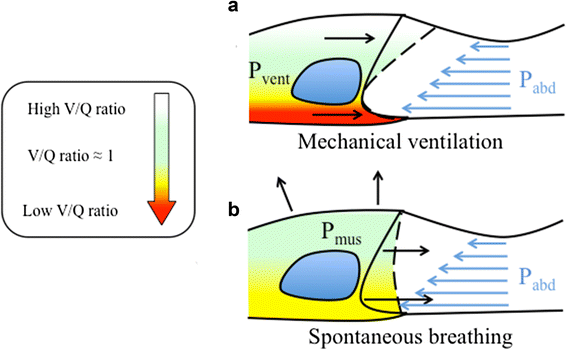"Awake" extracorporeal membrane oxygenation (ECMO): pathophysiology, technical considerations, and clinical pioneering
- PMID: 27357690
- PMCID: PMC4928342
- DOI: 10.1186/s13054-016-1329-y
"Awake" extracorporeal membrane oxygenation (ECMO): pathophysiology, technical considerations, and clinical pioneering
Abstract
Venovenous extracorporeal membrane oxygenation (vv-ECMO) has been classically employed as a rescue therapy for patients with respiratory failure not treatable with conventional mechanical ventilation alone. In recent years, however, the timing of ECMO initiation has been readdressed and ECMO is often started earlier in the time course of respiratory failure. Furthermore, some centers are starting to use ECMO as a first line of treatment, i.e., as an alternative to invasive mechanical ventilation in awake, non-intubated, spontaneously breathing patients with respiratory failure ("awake" ECMO). There is a strong rationale for this type of respiratory support as it avoids several side effects related to sedation, intubation, and mechanical ventilation. However, the complexity of the patient-ECMO interactions, the difficulties related to respiratory monitoring, and the management of an awake patient on extracorporeal support together pose a major challenge for the intensive care unit staff. Here, we review the use of vv-ECMO in awake, spontaneously breathing patients with respiratory failure, highlighting the pros and cons of this approach, analyzing the pathophysiology of patient-ECMO interactions, detailing some of the technical aspects, and summarizing the initial clinical experience gained over the past years.
Figures



References
-
- Morris AH, Wallace CJ, Menlove RL, Clemmer TP, Orme JF, Jr, Weaver LK, et al. Randomized clinical trial of pressure-controlled inverse ratio ventilation and extracorporeal CO2 removal for adult respiratory distress syndrome. Am J Respir Crit Care Med. 1994;149:295–305. doi: 10.1164/ajrccm.149.2.8306022. - DOI - PubMed
-
- Davies A, Jones D, Bailey M, Beca J, Bellomo R, Blackwell N, et al. Extracorporeal membrane oxygenation for 2009 influenza A (H1N1) acute respiratory distress syndrome. JAMA. 2009;2009(302):1888–95. - PubMed
-
- Peek GJ, Mugford M, Tiruvoipati R, Wilson A, Allen E, Thalanany MM, et al. Efficacy and economic assessment of conventional ventilatory support versus extracorporeal membrane oxygenation for severe adult respiratory failure (CESAR): a multicentre randomised controlled trial. Lancet. 2009;374:1351–63. doi: 10.1016/S0140-6736(09)61069-2. - DOI - PubMed
Publication types
MeSH terms
LinkOut - more resources
Full Text Sources
Other Literature Sources
Medical
Miscellaneous

